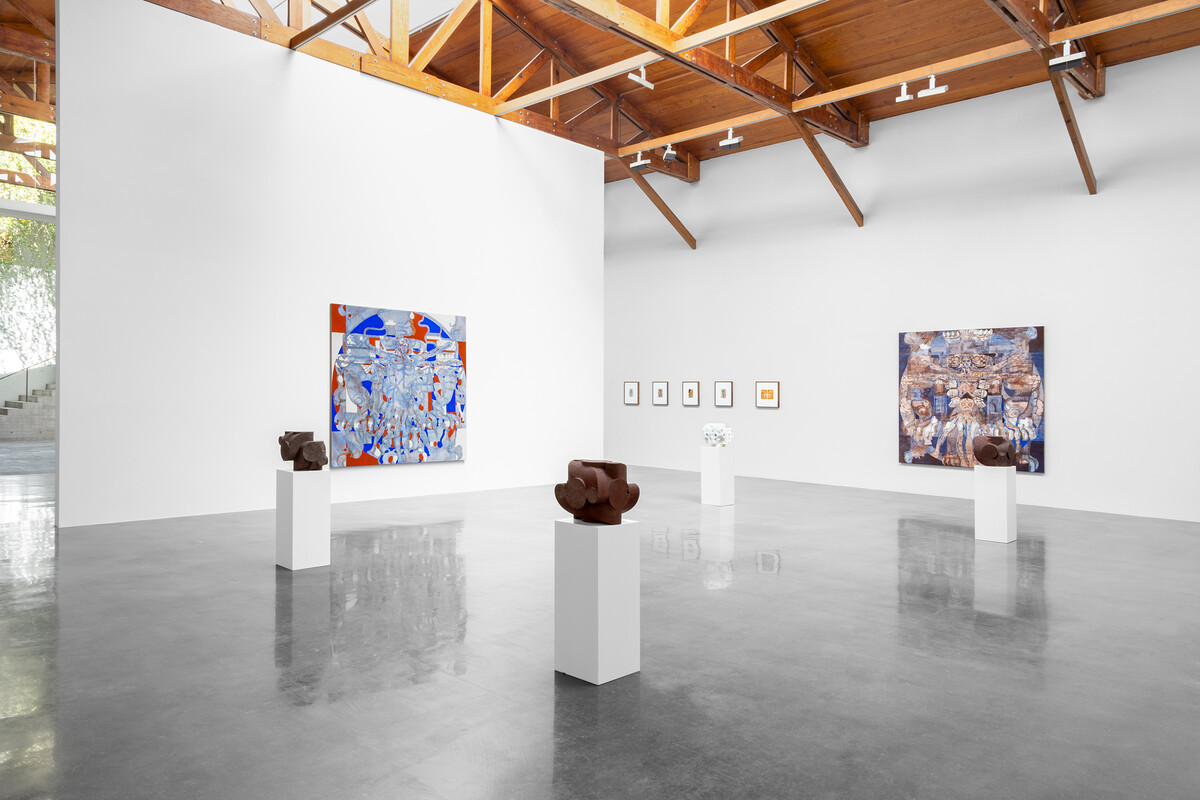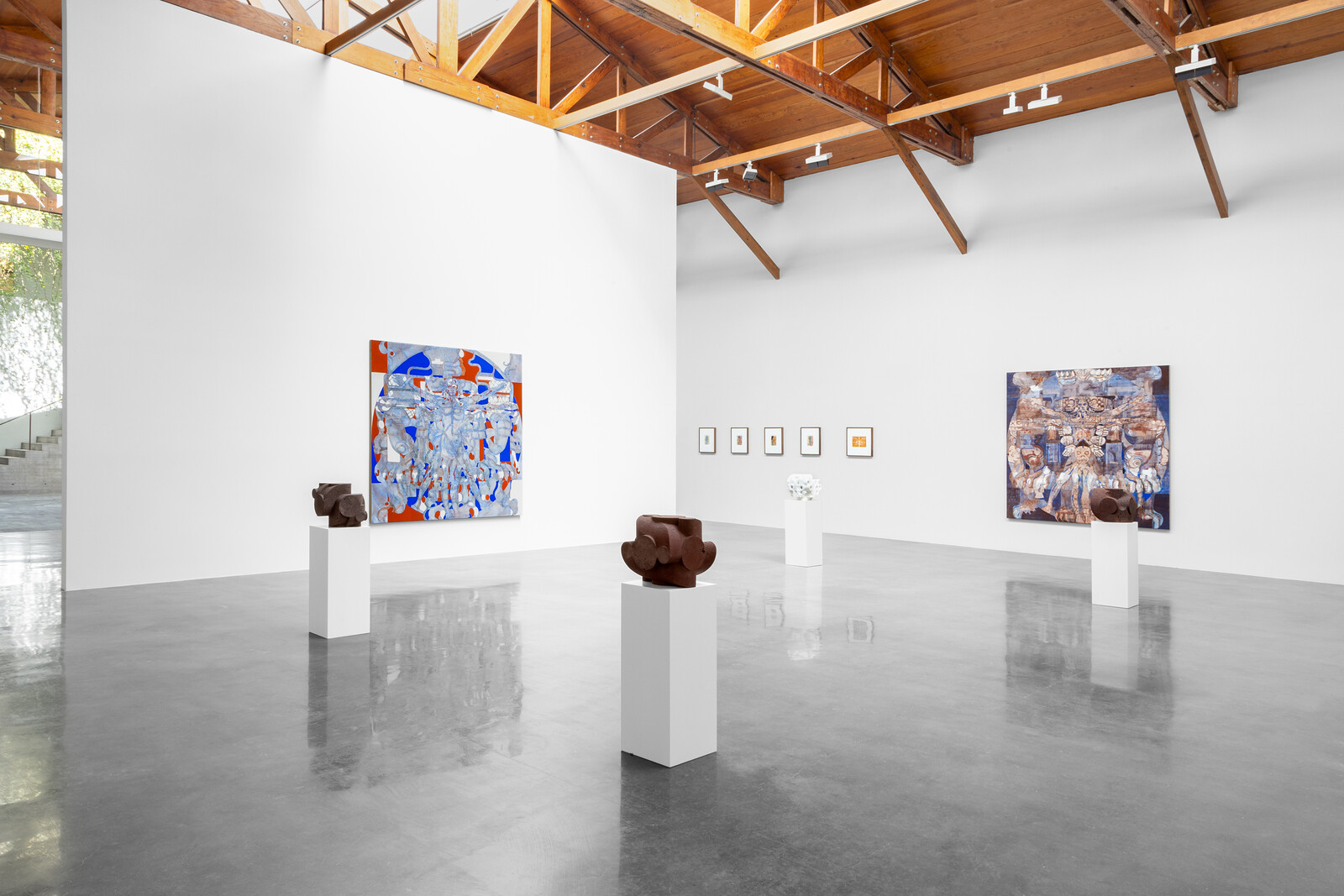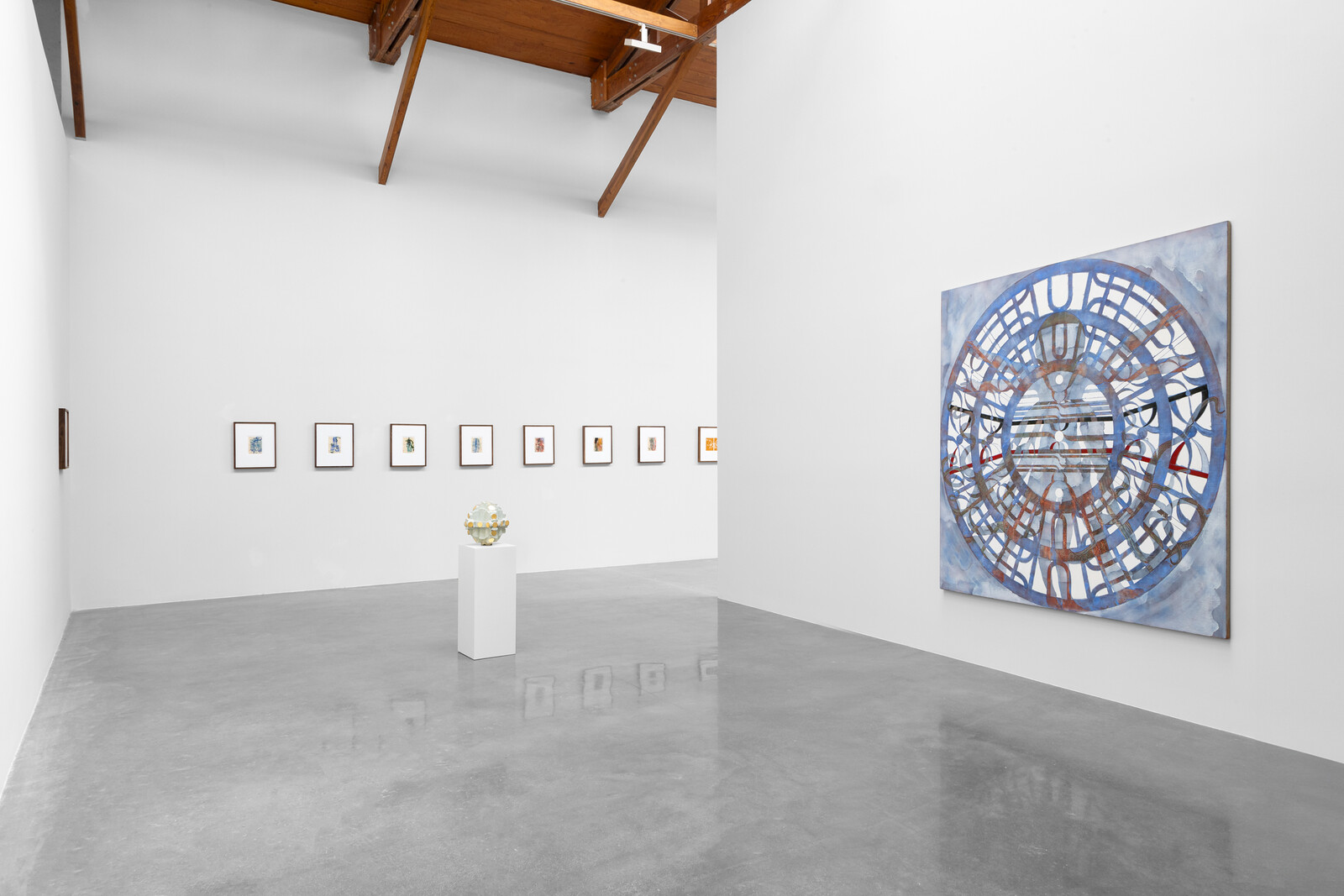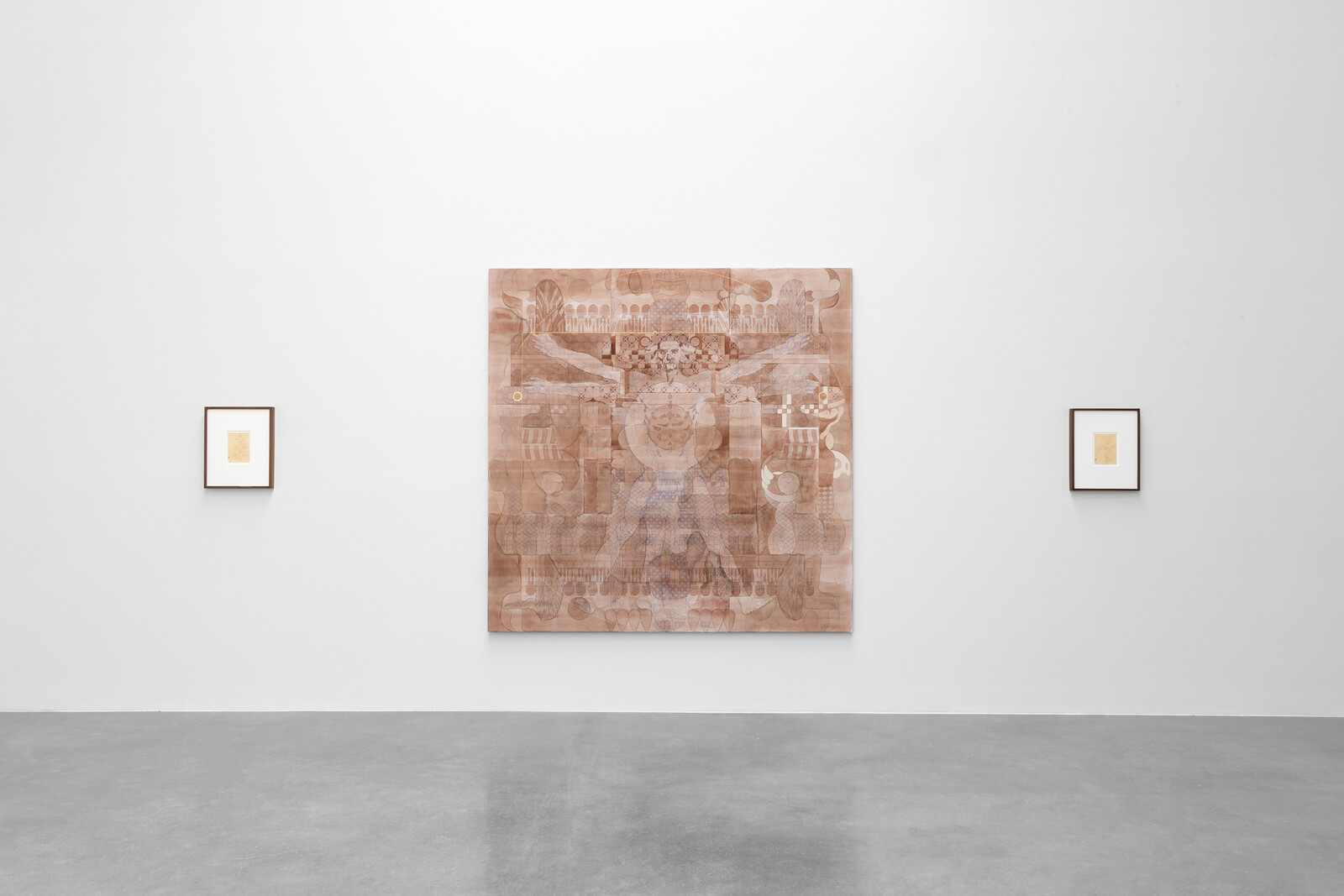February 10–March 23, 2024
Gob. Rafael Rebollar 94, Colonia San Miguel Chapultepec
11850 Mexico City,
Mexico
Hours: Tuesday–Thursday 11am–6pm,
Friday–Saturday 11am–4pm
T +52 55 5256 2408
info@kurimanzutto.com
Seven years after transforming kurimanzutto into an OXXO convenience store as part of the OROXXO project, Gabriel Orozco’s latest exhibition at the gallery presents recent drawings, paintings and sculptures intricately connected to the places where he lives.
The drawings in Diario de Plantas, made in notebooks small enough to fit in the palm of a hand, record the imprints and sketches of leaves to trace an open-ended cartography of organic growth. Orozco began this series in Tokyo during the COVID pandemic, documenting the leaves that caught his attention or fell at his feet; then, the diary traveled with him to Acapulco and Mexico City, where he was working on the master plan for a large public project to renovate the city’s central Chapultepec Park. From the pages of his Diario we get a glimpse of the artist’s daily practice as well as his enduring interest in landscape and the natural environment. The traces and imprints made with gouache, tempera, ink and graphite suggest deliberate improvisation, where the delicate textures and shapes of each specimen guide his exploration of organic structures and color. In some works, the minimalist compositions and the mastery of ink evoke the art of calligraphy, while others seem closer to ukiyo-e, Japanese woodblock prints with bold outlines and vibrant color palettes. Some drawings appear as a single sheet but many of them are presented in their original format: as double page spreads in a notebook. The Diario seems to document a form of vegetal, photosynthetic language, a kind of plant-thinking that communicates with us from the botanical entanglements of each page. Taken together, they grow into their own form of breathing and writing, with and in nature.
The sculptures are carved in stone based on the rotational relationship between time and matter present in some of his previous works, going as far back as the 1990s. They range from the plasticine Yielding Stone to the carved river stones on which he incised circular shapes, organic curves and orbits. Seeking to work with limestone, in 2017 he moved with his family to Bali, Indonesia, where this material has been used in temples for centuries. Here he began the Dés, dice in French, a series that furthers his investigation of circles, axles, seriality and symmetry. The sculptures included in the exhibition were made in Mexico, carved from local stones such as red volcanic tezontle and white marble. Every die is made by using a compass to trace the same concentric circles on a structural grid, which is drawn on a 30 x 30 centimeter cube and then carved on each of its six faces. The geometric diagram remains a constant, but the volumes and voids vary from one sculpture to another; like an alphabet that is used to tell a different story each time, the dice emerge from the same pattern but are never the same. By utilizing these drawings to cut away at a solid form, the artist unveils the motion embedded in matter through circles, the rotation dormant in the plane but running through the mass of the stone.
In his most recent paintings, Orozco articulates the seemingly implausible encounter of two figures, both produced around the 15th century: Leonardo Da Vinci’s ink notebook drawing, Vitruvian Man, and the monumental stone sculpture of Coatlicue, the Aztec goddess of life and death. Characterized by her skirt of writhing snakes, pendulous breasts and a necklace of human hearts, the Coatlicue is believed to represent duality, the struggle of opposites and the embodiment of cosmic forces connected to fertility, creation and destruction. On canvas, the silhouette of the sculpture first expands symmetrically with the addition of her profiles on both sides of the frontal view, and then vertically by mirroring her feet to show her volume from multiple points of view at once. Coatlicue’s expanded body overlaps with the western idealized proportions of the human body portrayed in Leonardo’s Vitruvian Man. The portrayal is framed by a square, centered on the genitals, and a circle, centered on his navel. These figures functioned as instruments: one was essential for Vitruvian architectural scales and the other had a symbolic role in prehispanic spiritual and ritual processes. By enlarging the Vitruvian Man to a human scale within each two-by-two meter canvas and re-scaling the head, torso and legs of the Coatlicue’s body, these figures become intertwined, exceeding the functional beliefs that inspired them. The drawing and the sculpture are transformed into a pictorial metaphor, promoting the interplay of contemporaneous cultures and overlapping their presumed modulation of our bodies in the Universe. Using the ancient technique of tempera painting, this series presents a composition in five versions, using the same five colors but employing different analytical techniques.
In a prior series of paintings, made over the course of two years while working on Diario de Plantas and the Chapultepec project, Orozco merged the Vitruvian Man—originally conceived as an architectural diagram—with images of animals, plants and specific cultural references. The human form appears entwined with drawings of flora and fauna in different compositions; for example, in some paintings, the recurrent image of a waterlily at times recalls cellular structures seen under a microscope, as though a single leaf mirrored the microcosm contained in the human body. Another painting melds an octopus, Leonardo’s drawing and a Jain cosmological diagram that maps the universe as a central island surrounded by a series of concentric rivers, oceans and continents, combining the Vitruvian beliefs of the Renaissance with a classic spiritual Jain image. The fusion of all these elements invites us to contemplate an unstable conciliation of forces that oscillate between animal and human, feminine and masculine, geometric and organic, scientific and spiritual. Just as Diario de Plantas conjures nature’s processes of growth and decay, these paintings bring the cyclical nature of our cosmos to the fore.







